|
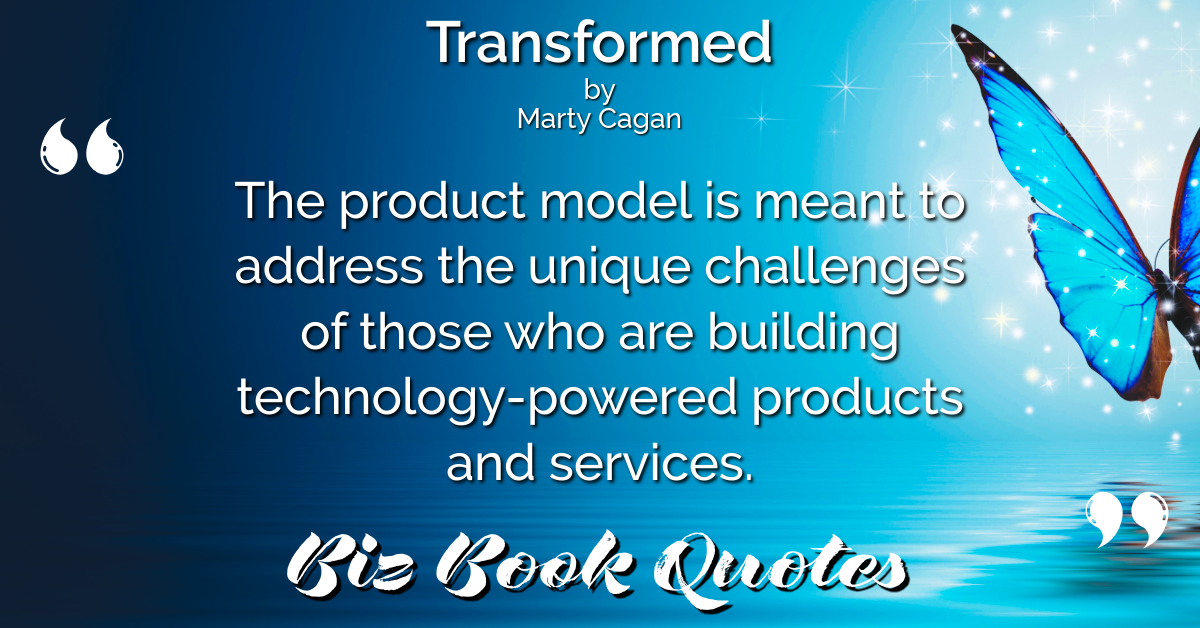
|
Transformed:
The product model is meant to address the unique challenges of those who are building technology-powered products and services.
|
002 |
|

|
Transformed:
…companies transform because they believe they need to be able to successfully take advantage of new opportunities that arise and effectively respond to serious threats.
|
003 |
|
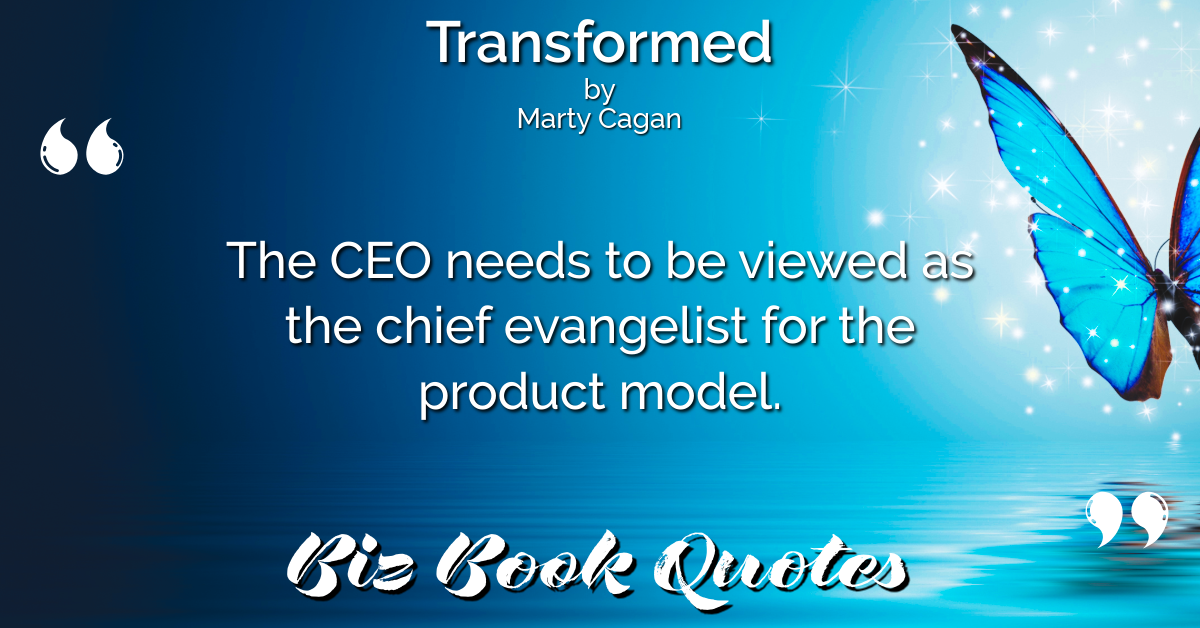
|
Transformed:
The CEO needs to be viewed as the chief evangelist for the product model.
|
005 |
|
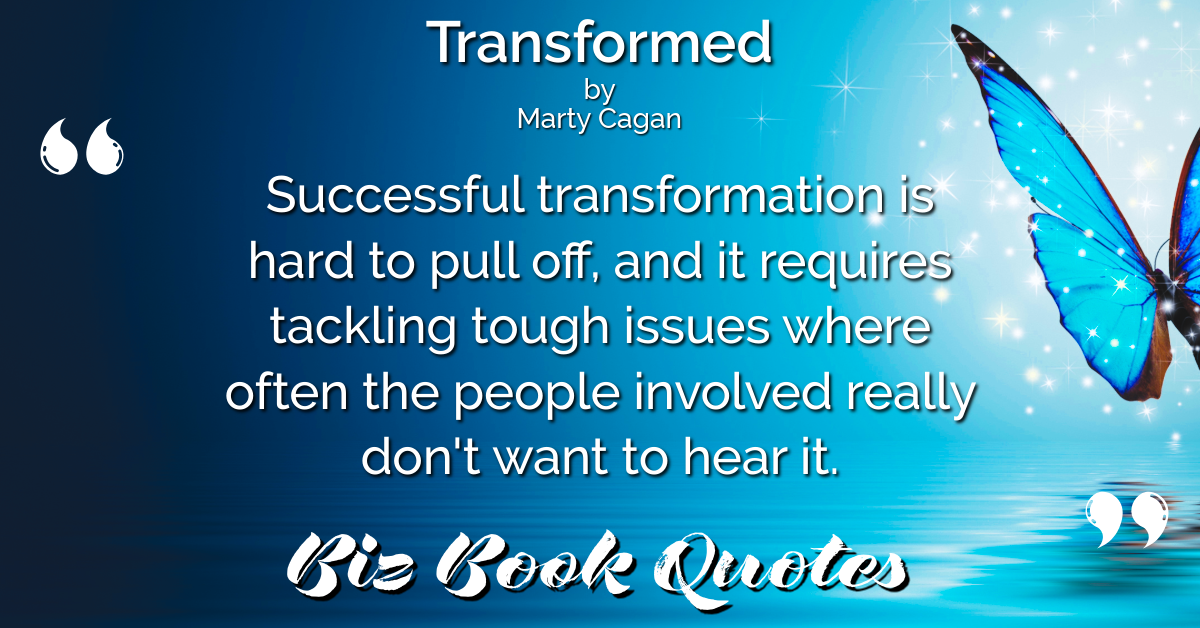
|
Transformed:
Successful transformation is hard to pull off, and it requires tackling tough issues where often the people involved really don’t want to hear it.
|
006 |
|
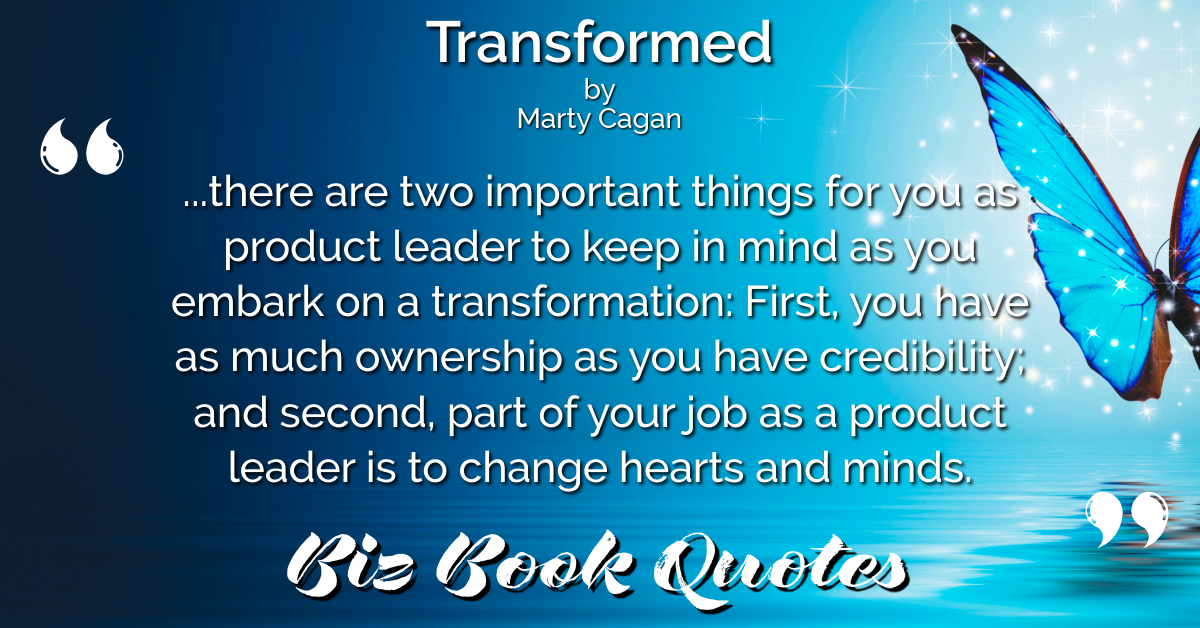
|
Transformed:
…there are two important things for you as product leader to keep in mind as you embark on a transformation: First, you have as much ownership as you have credibility; and second, part of your job as a product leader is to change hearts and minds.
|
006 |
|
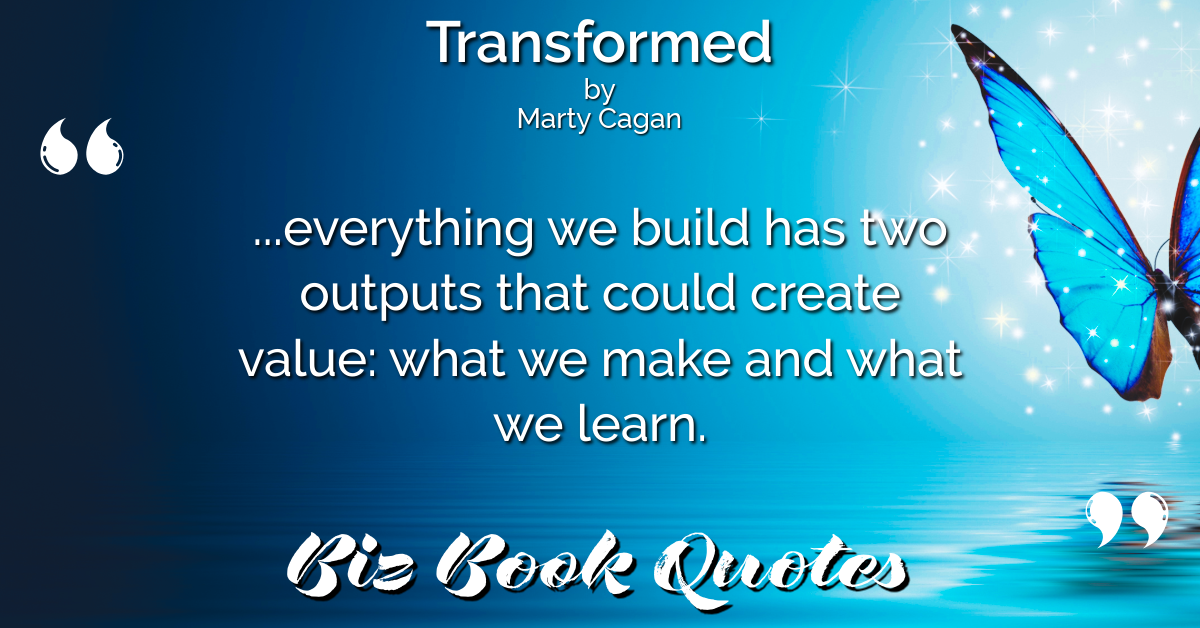
|
Transformed:
…everything we build has two outputs that could create value: what we make and what we learn.
|
007 |
|
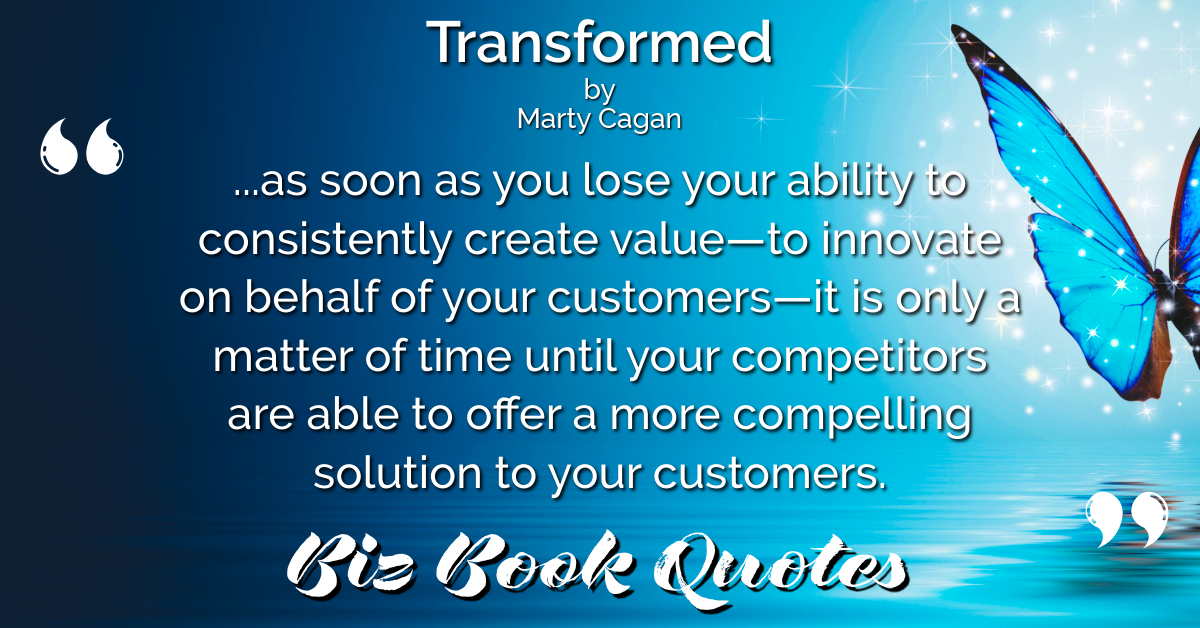
|
Transformed:
…as soon as you lose your ability to consistently create value—to innovate on behalf of your customers—it is only a matter of time until your competitors are able to offer a more compelling solution to your customers.
|
008 |
|
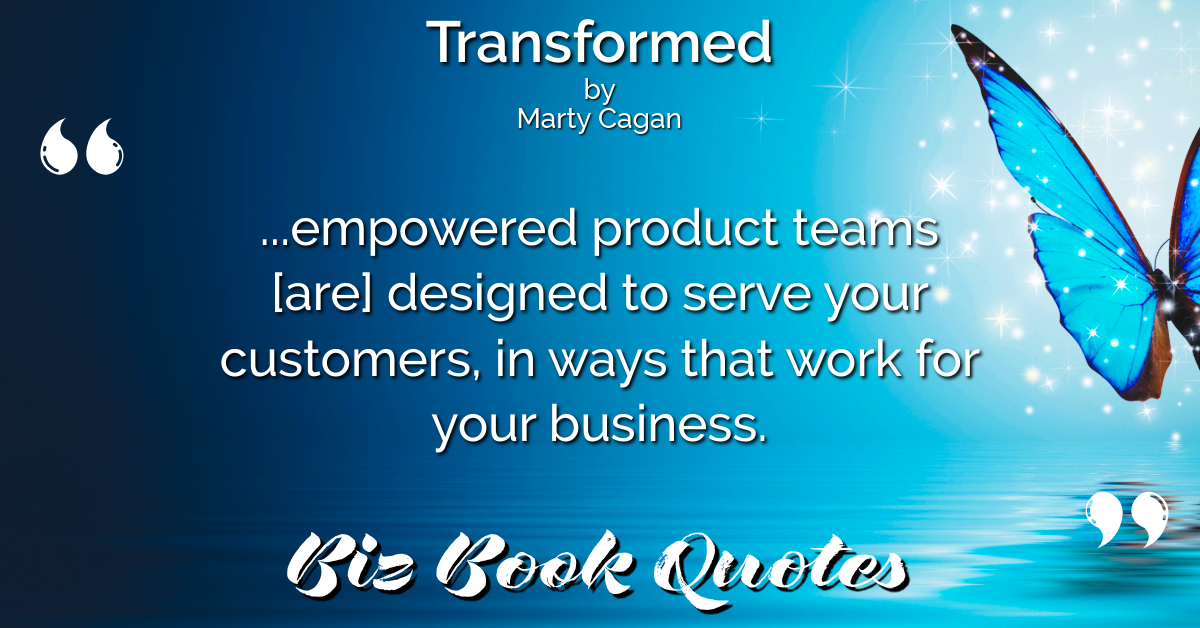
|
Transformed:
…empowered product teams [are] designed to serve your customers, in ways that work for your business.
|
008 |
|

|
Transformed:
This is why — without the visible and real support from the very top of the organization — transformations so often fail.
|
008 |
|

|
Transformed:
Strong, cross-functional, empowered product teams composed of product managers, product designers, and engineers—working together to solve customer problems in ways that your customers love yet work for your business—is the essential core concept of the product model.
|
008 |











